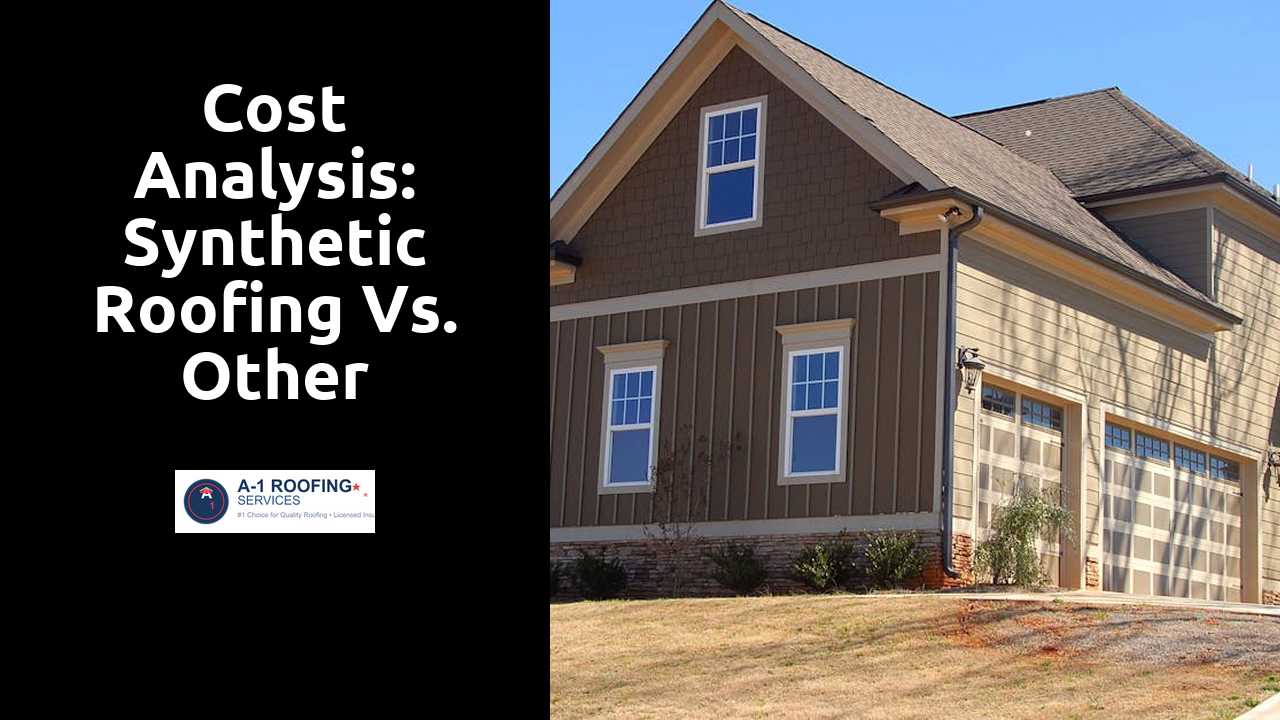
Cost Analysis: Synthetic Roofing vs. Other Materials
Table Of Contents
Aesthetic Considerations in Roofing Choices
The visual appeal of a home is significantly influenced by its roofing materials. Homeowners often seek roofing options that complement their architectural style. Synthetic roofing materials have made remarkable strides in replicating the look of traditional options such as wood shakes or slate tiles. These innovations offer a diverse palette of colors and textures, allowing for customization and enhancing curb appeal.
Another important factor is the longevity and performance of the roofing material. While aesthetics play a crucial role in initial selection, the durability of a synthetic roof contributes to its overall look over time. Many synthetic materials provide resistance to fading, damaging weather, and moss growth, preserving their original beauty for many years. This combination of aesthetics and longevity makes synthetic roofing an attractive option for homeowners looking to balance style and functionality.
Here is a super informative post that goes into more detail.
Impact on Property Value
The choice of roofing material can significantly influence property value. Homebuyers often assess aesthetics and durability when evaluating a home. Synthetic roofing, which mimics the appearance of traditional materials like wood or slate, offers an appealing option that can enhance curb appeal. This type of roofing is also designed to withstand harsh weather conditions, which can reassure potential buyers about the longevity and reliability of the home.
Additionally, properties featuring synthetic roofing may command higher prices in competitive markets. The technology behind synthetic materials often includes enhanced energy efficiency, which is increasingly attractive to environmentally conscious buyers. As the real estate landscape evolves, potential homeowners are more inclined to invest in a property that offers modern solutions alongside traditional charm. Thus, a home equipped with high-quality synthetic roofing can stand out, making it more desirable and likely to maintain or increase its market value over time.
Environmental Considerations for Synthetic Roofing
The environmental impact of roofing materials is a growing concern for homeowners and builders alike. Synthetic roofing options are often designed for durability and longevity, which can result in less frequent replacements compared to traditional materials. This longevity can contribute to reduced waste in landfills, as roofs typically represent a significant volume of construction waste. Additionally, many synthetic roofing products are manufactured using recycled materials, further enhancing their environmental appeal.
Sustainability extends beyond the lifespan of roofing materials. Synthetic options frequently showcase energy-efficient properties, helping to reduce heat retention and lower cooling costs in hotter climates. This energy performance can lead to decreased reliance on HVAC systems, resulting in lower energy consumption overall. Moreover, some synthetic materials reflect UV rays, contributing to a cooler building surface, which can be particularly beneficial in urban environments where heat islands are prevalent.
Costs Associated with Sustainability
The costs involved in sustainable roofing materials extend beyond upfront pricing. For instance, many eco-friendly options, such as recycled materials or products sourced from responsible manufacturers, often carry a premium due to their production processes. Homeowners investing in these materials may also incur additional expenses related to installation, as specialized skills may be required to ensure that the materials perform optimally and adhere to environmental standards.
Long-term savings can mitigate some of these initial costs. Energy-efficient roofs often reduce heating and cooling expenses significantly over time. Additionally, homeowners may find that sustainable materials lead to lower maintenance costs due to their durability. Insurance companies may also offer discounts for environmentally friendly roofing choices, further contributing to overall savings and making sustainable options increasingly attractive for budget-conscious consumers.
Resale Value and Market Trends
The resale value of a property can be significantly influenced by the materials used in its roofing. Synthetic roofing, known for its longevity and low maintenance requirements, may appeal to homebuyers looking for durable options. As sustainability becomes a priority for many consumers, green certifications associated with synthetic materials can enhance appeal. Properties showcasing these features often attract higher offers, suggesting that modern buyers increasingly favor homes with forward-thinking materials over traditional ones.
Market trends are shifting towards greater acceptance of synthetic roofing solutions. Data indicates a growing number of homeowners investing in eco-friendly technologies, which include synthetic materials designed to mimic traditional roofing styles while offering superior performance. As local housing markets evolve, the alignment between roofing choices and buyer preferences can directly affect how properties are valued, making these modern materials an important consideration for future resale potential.
Analyzing Buyer Preferences
Understanding buyer preferences is crucial for assessing the market for synthetic roofing materials. Many homeowners prioritize long-term durability and lower maintenance costs when selecting roofing options. The aesthetics of synthetic materials, which can mimic traditional styles while offering modern benefits, appeal to a broad range of buyers. This versatility allows potential homeowners to customize their roofing choices, thereby increasing interest in properties that feature synthetic options.
Financial considerations also play a significant role in influencing buyer decisions. Individuals are often swayed by the upfront costs associated with various roofing materials but may also weigh the long-term savings on repairs and replacements. Market trends suggest that properties with energy-efficient and environmentally friendly roofing are becoming increasingly attractive. This growing awareness among buyers reflects a shift towards investments that promise sustainability and cost-effectiveness over time.
Related Links
Environmental Impact of Synthetic Roofing SolutionsEvaluating the Longevity of Synthetic Roofing Products